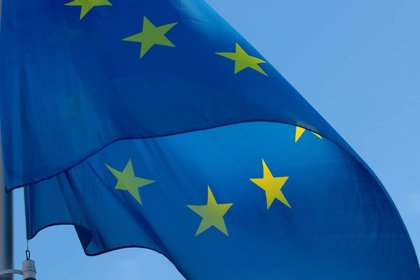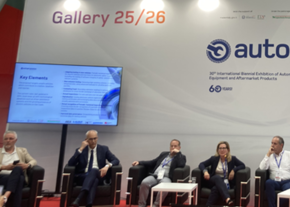
19/09/2018
The EU Commission’s mobility package: “vision zero”
Massimo Brunamonti
Autonomous driving, traffic laws standardization, better infrastructures and cyber-security. Here are the guidelines set by Brussels to enhance road safety.
Finally, after so much debating, the European Commission has issued a document, called “Mobility Package”, on one of the hottest topics currently involving transport on wheels: Europe’s future mobility strategy.
The topic is certainly a widely debated one, just consider the impressive amount of studies and investments made on it in recent years; to these we must also add serious issues, sometimes even dramatic, connected to it, such as deadly accidents in the US and other places. In Italy the previous government, in the person of the then Minister of Transport Graziano Del Rio, issued a specific decree on the subject, which included autonomous driving tests. A widely appreciated initiative that sets our country in the perfect position to play an important role in developing this new technology.
There are two main points within the Commission’s communication: the first is why. Why is autonomous driving acquiring such an unprecedented social and political significance? The Commission expressed its philosophy quite clearly highlighting its vision: the idea is that autonomous driving will contributes to a substantial reduction in accidents, pollution and traffic congestion. We should not forget that Europe has already set itself a rather ambitious objective, the so-called "Zero Vision", that is zero killed in road accidents; autonomous vehicles are considered a fundamental step in reaching such a result, so much so that since 2014, funds allocated to research and development reached 300 million euro, and as of 2018, a further 103 million have been issued to support high automation pilot projects for cars and trucks. In addition to this, another 50 million have been set aside for 5G connection as an aid to assisted driving.
However the most important developments are bound to take place in the field of smart urban infrastructures, a fundamental element for tomorrow’s mobility. A total of 1,173 million euro are currently being allocated to the European Connection Structure, entrusted with digitizing the continent’s road infrastructures in 16 EU countries including Italy. The structure, designed for all road mobility has as its first objective freight traffic: an example of this is the "Truck Platooning" pilot project. The designation, which may seem quite fanciful, relates to a row of self-driving trucks marching in line at a very short distance behind each other in order to reduce consumption and consequently pollution. Well, the project, called "Ensemble", will kick-off during the summer of 2018. Another technological infrastructure necessary and currently under development is the Galileo European satellite system, launched at the time of the Prodi Presidency, and able to ensure vehicle geolocation with unprecedented precision.
The second point of the Communication is: how. Interestingly, the document mentions the new type-approval scheme (see article in the past issue of Pneurama), issued last May, which provides for post-approval checks, Europe being the first area in the world to equip itself with such an instrument. It goes without saying that, the greater degree of automation requires a greater degree of vehicle reliability. The Commission summarizes the concept in two key words: automated yet safe; safety, in fact, requires other collateral initiatives such as standardized traffic codes, improved road conditions and adequate road signage and cyber security.
A rosy future, at least according to the Commission when it mentions the advantages that smart mobility can bring, for example, to people with disabilities; however, there is no lack of gray areas such as the forecasted reduction in the number of drivers and the consequent social need for rethinking and/or retrain the whole category. On the other hand, autonomous driving, along with increasingly connected vehicles, will generate a wide range of new and innovative services which in turn will create added value and new medium-high level job opportunities.
Finally, one cannot help noticing that the conclusion of the document fails to hide a certain embarrassment in trying to trace a final balance in relation to the expected outcome of this automated revolution. In other words: everything will be fine but who can tell? Obviously, as with any revolution some will come out on top and some will lose, but one thing is certain, like it or not, it will happen and "Europe, as a whole, is called upon to seize the opportunity if it wants to retain its leadership".
The topic is certainly a widely debated one, just consider the impressive amount of studies and investments made on it in recent years; to these we must also add serious issues, sometimes even dramatic, connected to it, such as deadly accidents in the US and other places. In Italy the previous government, in the person of the then Minister of Transport Graziano Del Rio, issued a specific decree on the subject, which included autonomous driving tests. A widely appreciated initiative that sets our country in the perfect position to play an important role in developing this new technology.
There are two main points within the Commission’s communication: the first is why. Why is autonomous driving acquiring such an unprecedented social and political significance? The Commission expressed its philosophy quite clearly highlighting its vision: the idea is that autonomous driving will contributes to a substantial reduction in accidents, pollution and traffic congestion. We should not forget that Europe has already set itself a rather ambitious objective, the so-called "Zero Vision", that is zero killed in road accidents; autonomous vehicles are considered a fundamental step in reaching such a result, so much so that since 2014, funds allocated to research and development reached 300 million euro, and as of 2018, a further 103 million have been issued to support high automation pilot projects for cars and trucks. In addition to this, another 50 million have been set aside for 5G connection as an aid to assisted driving.
However the most important developments are bound to take place in the field of smart urban infrastructures, a fundamental element for tomorrow’s mobility. A total of 1,173 million euro are currently being allocated to the European Connection Structure, entrusted with digitizing the continent’s road infrastructures in 16 EU countries including Italy. The structure, designed for all road mobility has as its first objective freight traffic: an example of this is the "Truck Platooning" pilot project. The designation, which may seem quite fanciful, relates to a row of self-driving trucks marching in line at a very short distance behind each other in order to reduce consumption and consequently pollution. Well, the project, called "Ensemble", will kick-off during the summer of 2018. Another technological infrastructure necessary and currently under development is the Galileo European satellite system, launched at the time of the Prodi Presidency, and able to ensure vehicle geolocation with unprecedented precision.
The second point of the Communication is: how. Interestingly, the document mentions the new type-approval scheme (see article in the past issue of Pneurama), issued last May, which provides for post-approval checks, Europe being the first area in the world to equip itself with such an instrument. It goes without saying that, the greater degree of automation requires a greater degree of vehicle reliability. The Commission summarizes the concept in two key words: automated yet safe; safety, in fact, requires other collateral initiatives such as standardized traffic codes, improved road conditions and adequate road signage and cyber security.
A rosy future, at least according to the Commission when it mentions the advantages that smart mobility can bring, for example, to people with disabilities; however, there is no lack of gray areas such as the forecasted reduction in the number of drivers and the consequent social need for rethinking and/or retrain the whole category. On the other hand, autonomous driving, along with increasingly connected vehicles, will generate a wide range of new and innovative services which in turn will create added value and new medium-high level job opportunities.
Finally, one cannot help noticing that the conclusion of the document fails to hide a certain embarrassment in trying to trace a final balance in relation to the expected outcome of this automated revolution. In other words: everything will be fine but who can tell? Obviously, as with any revolution some will come out on top and some will lose, but one thing is certain, like it or not, it will happen and "Europe, as a whole, is called upon to seize the opportunity if it wants to retain its leadership".






